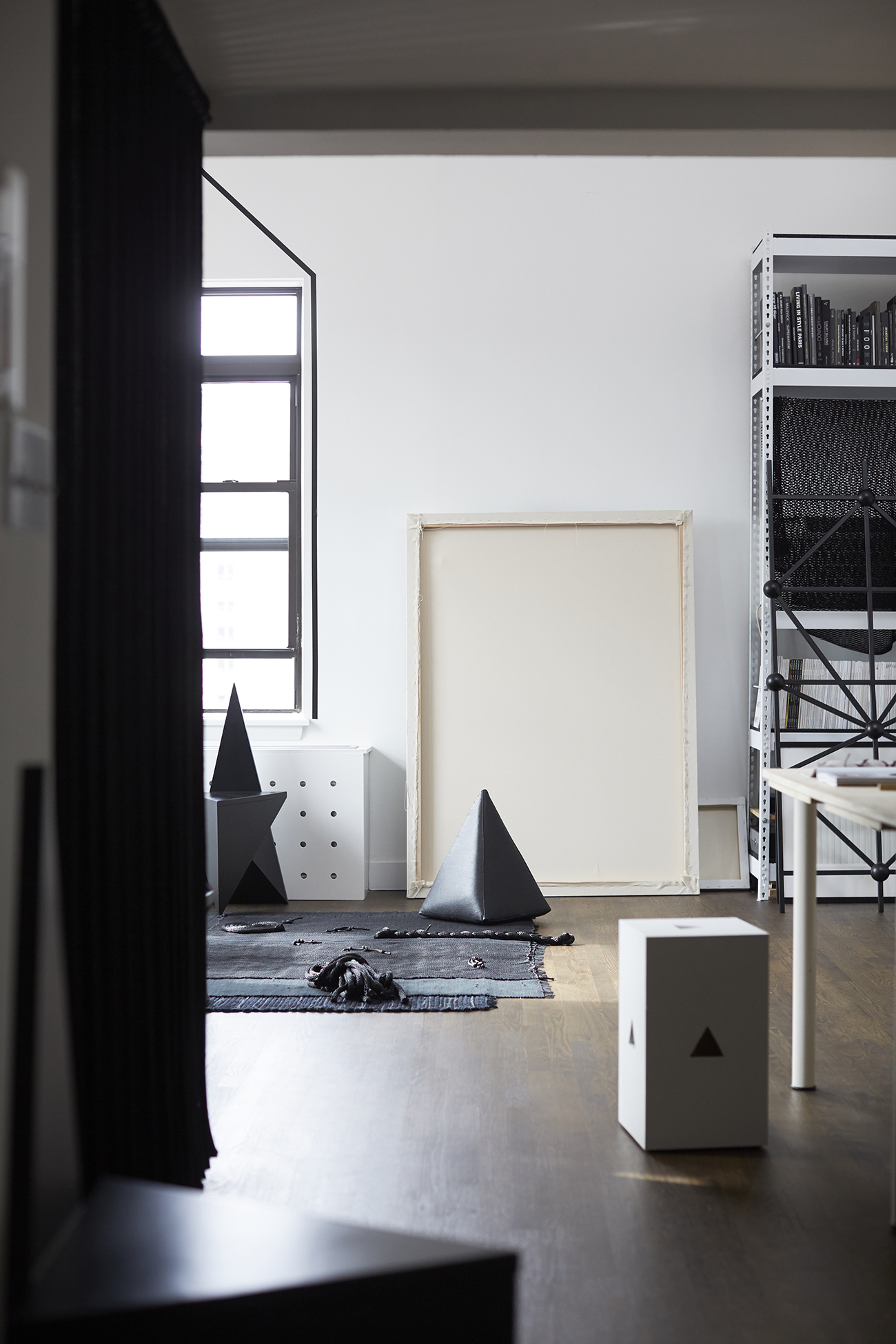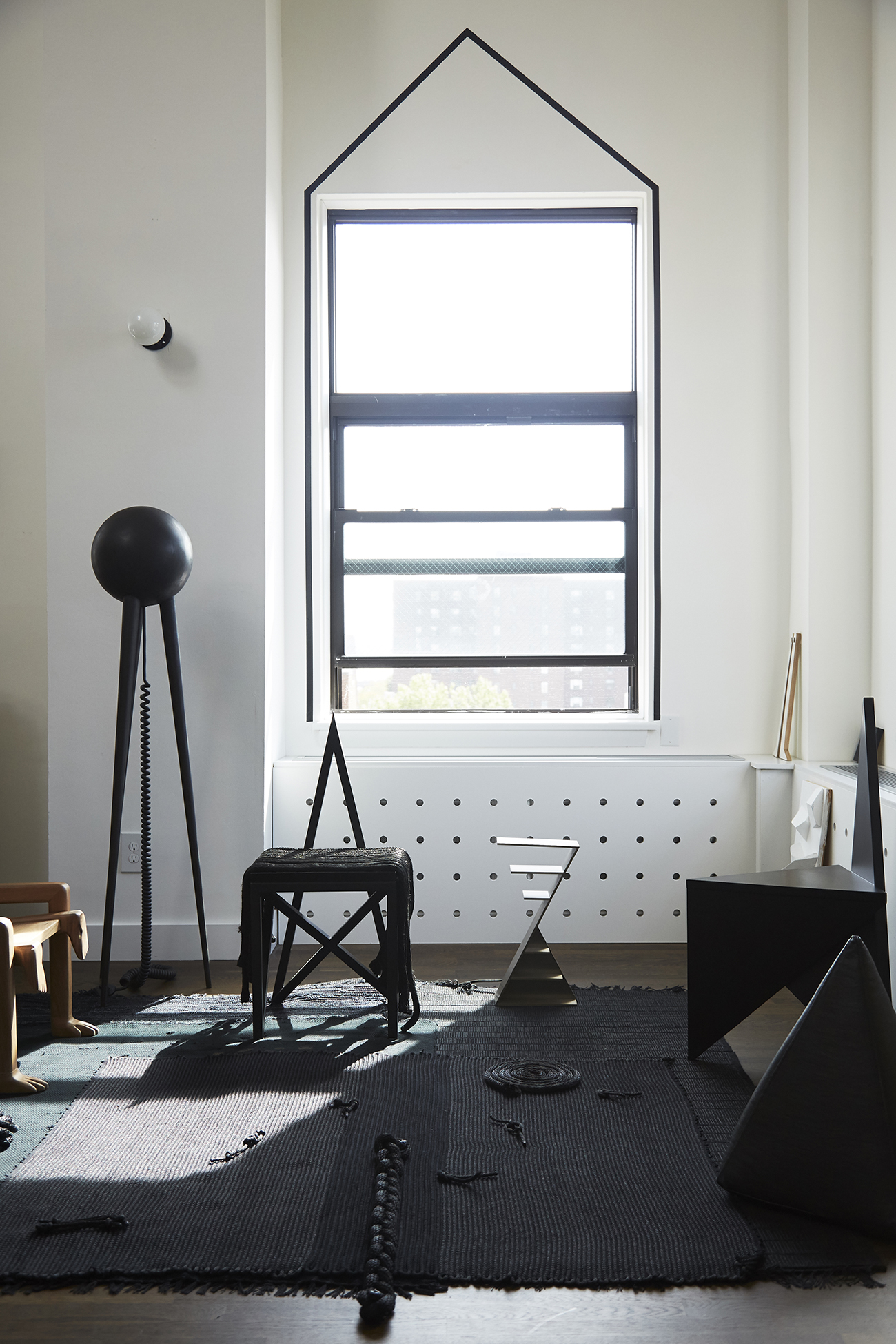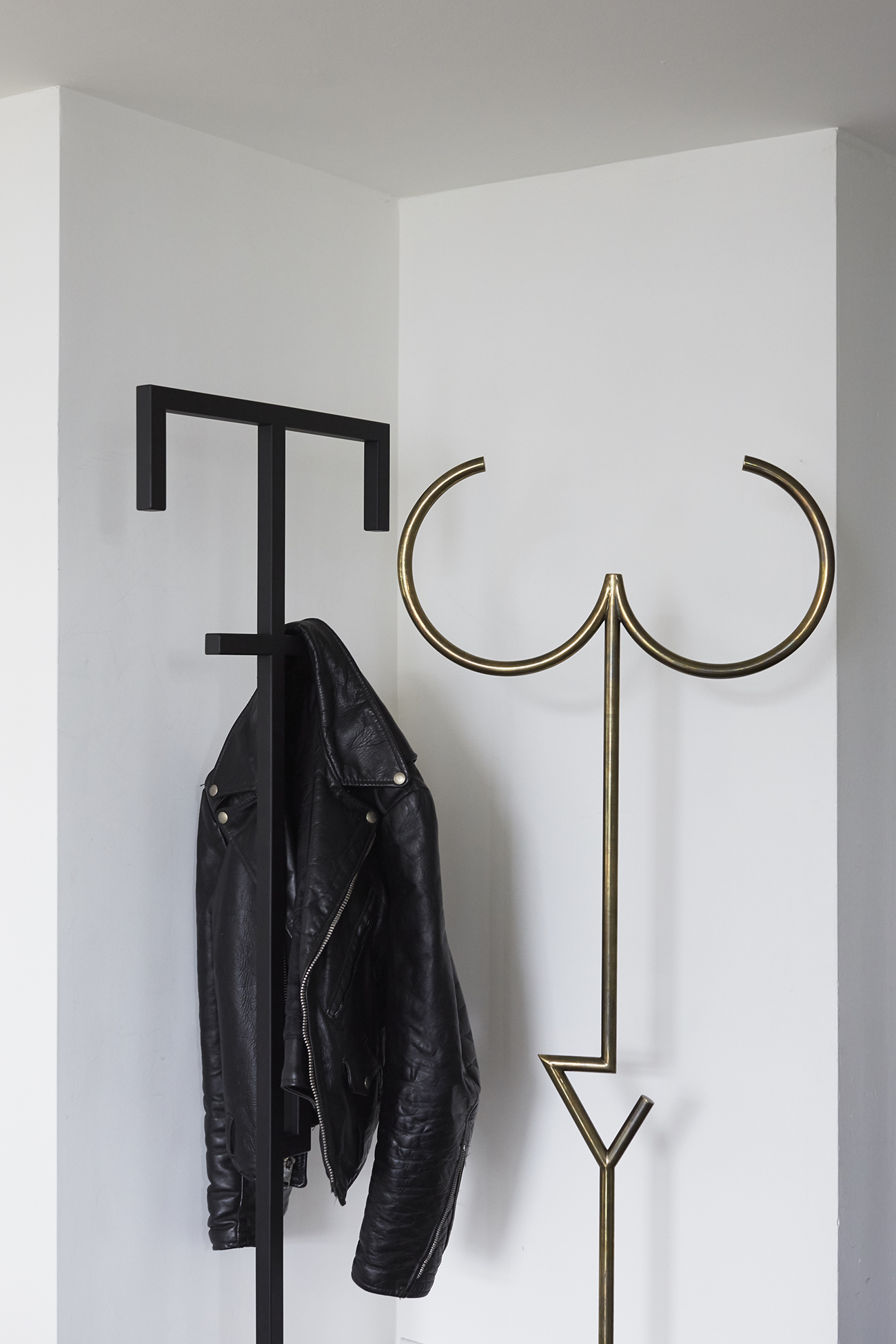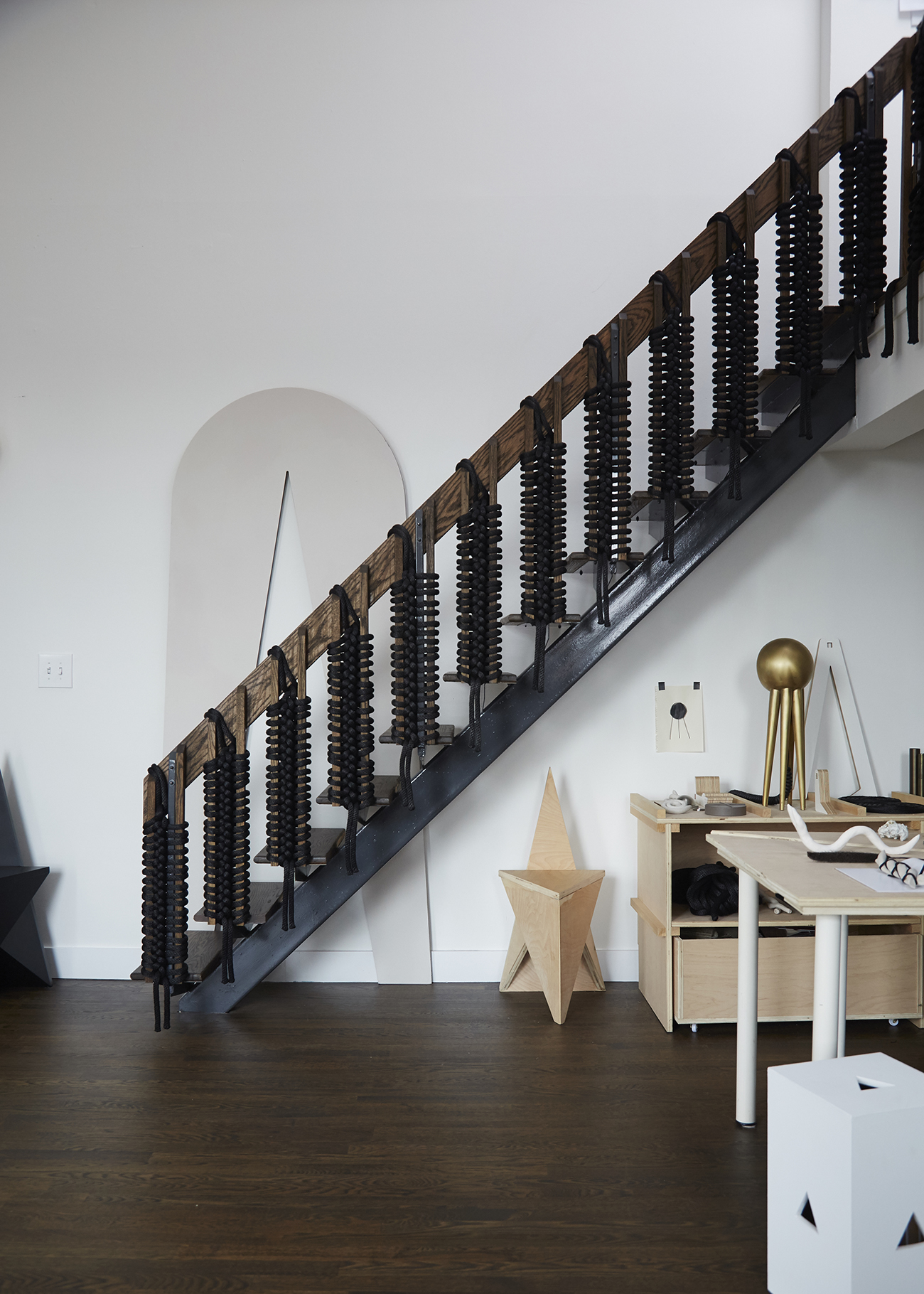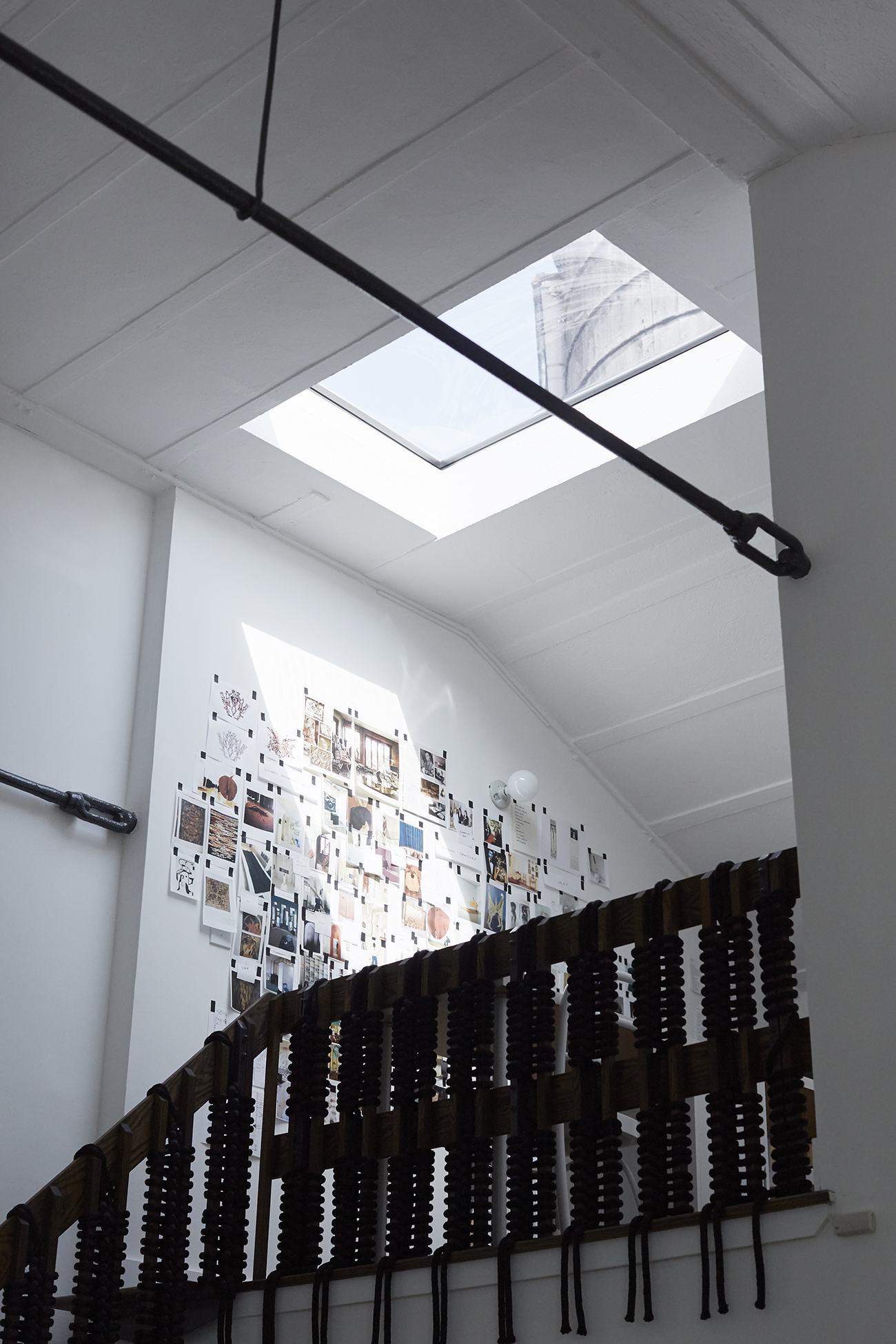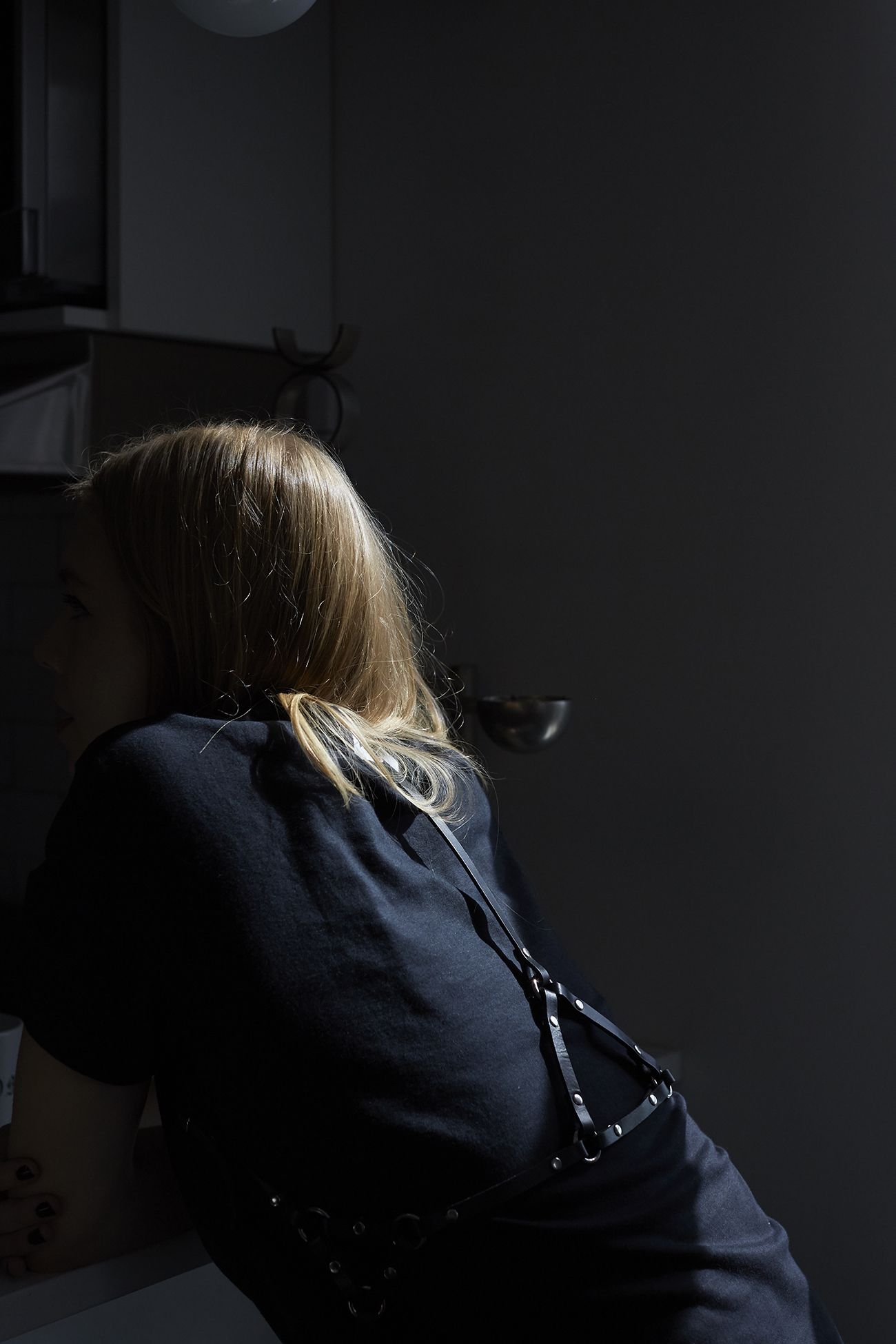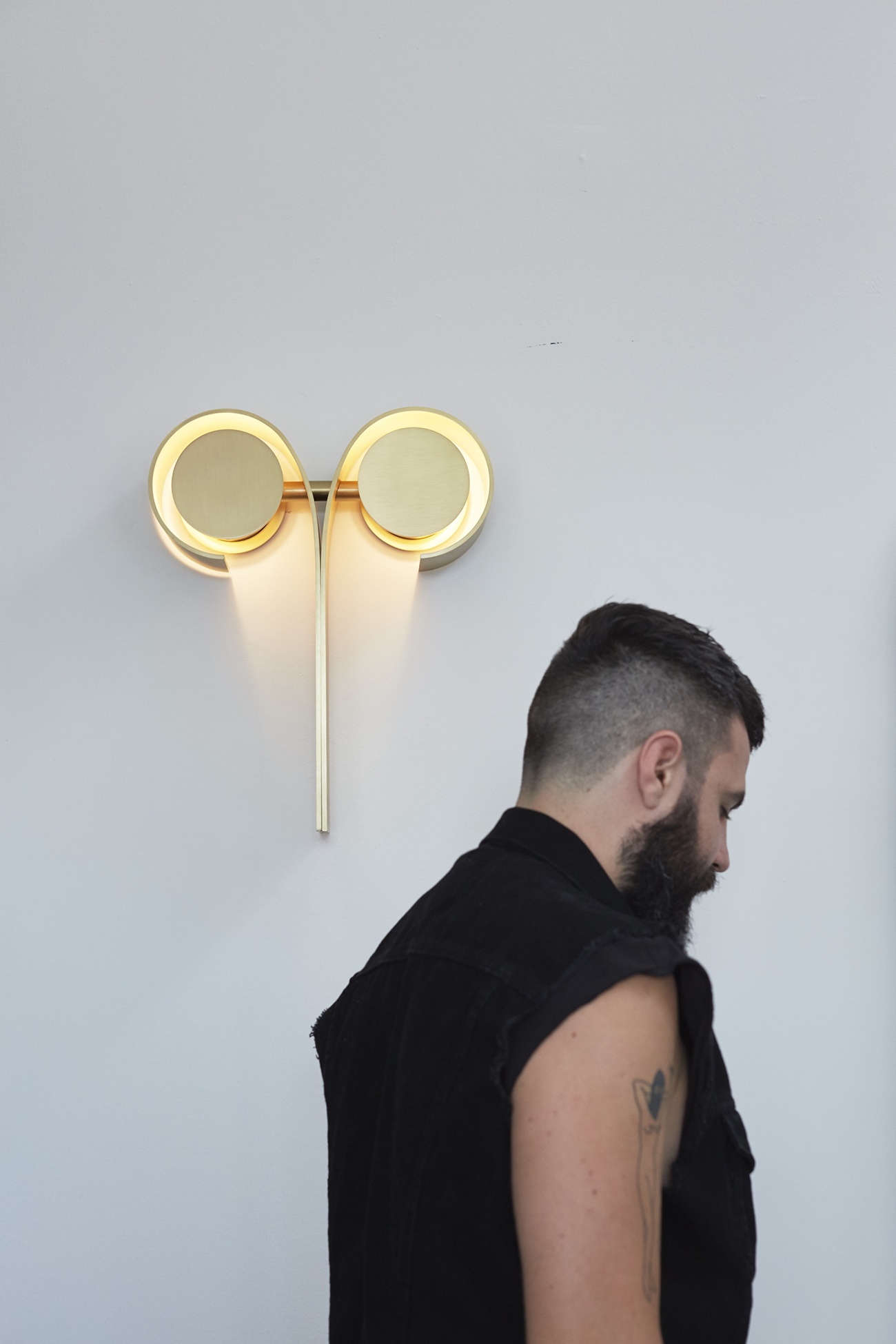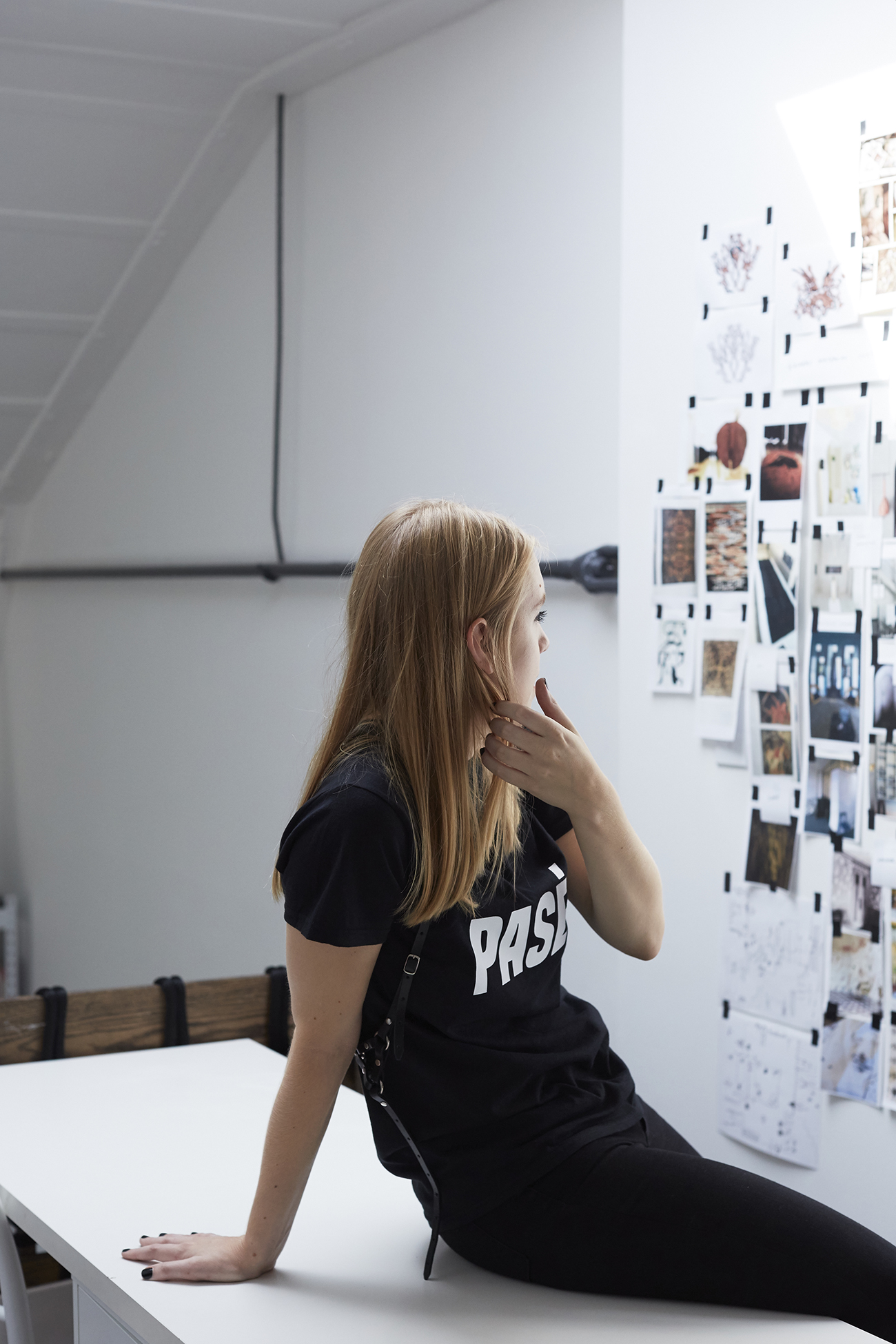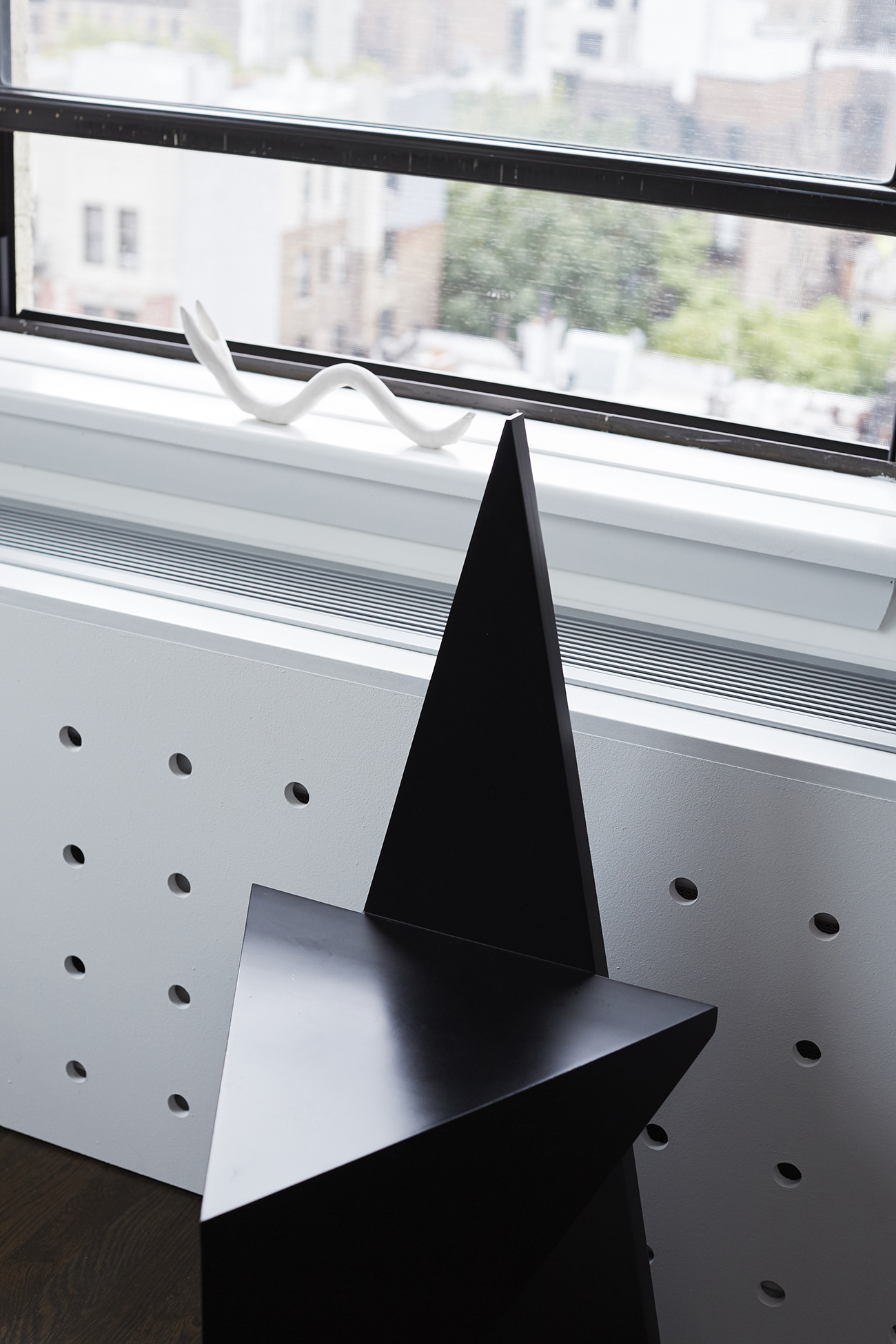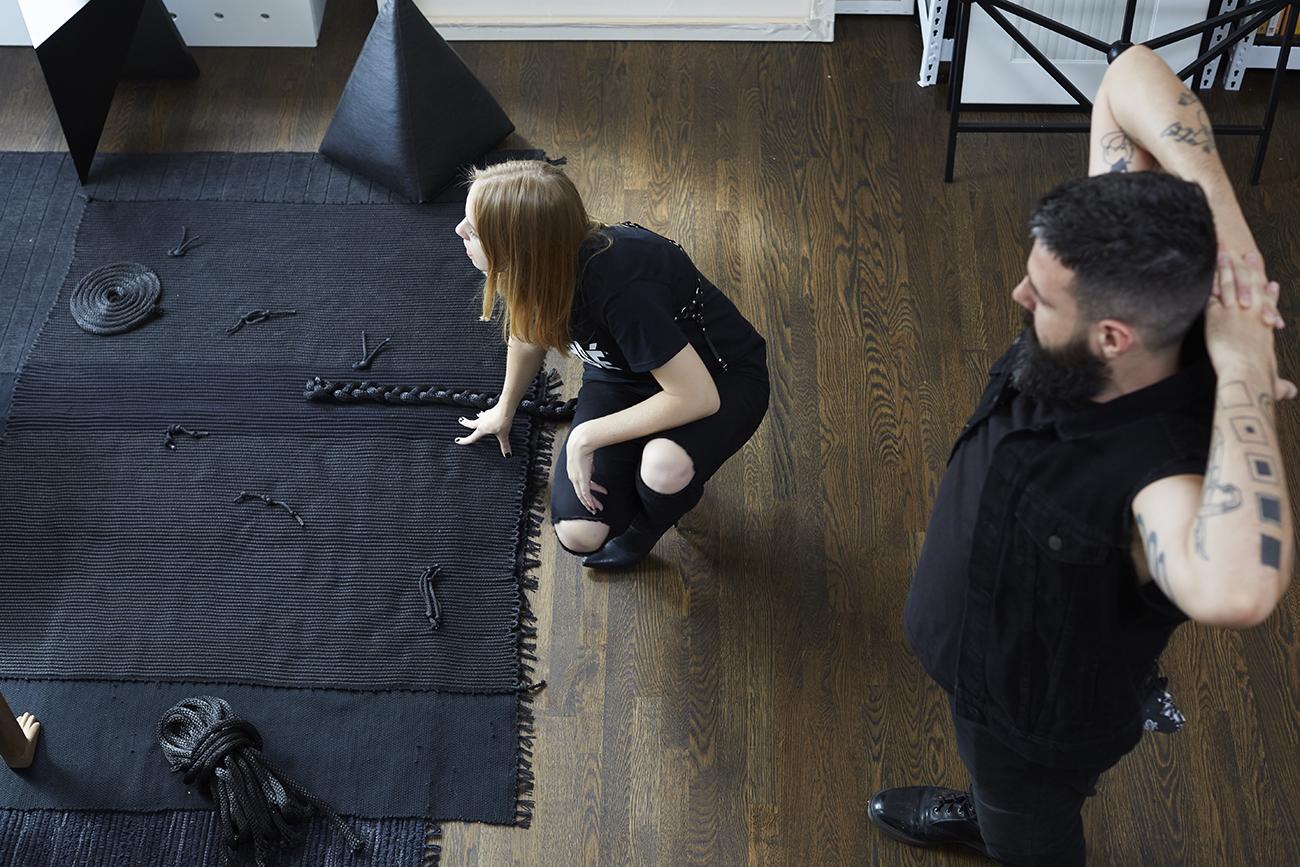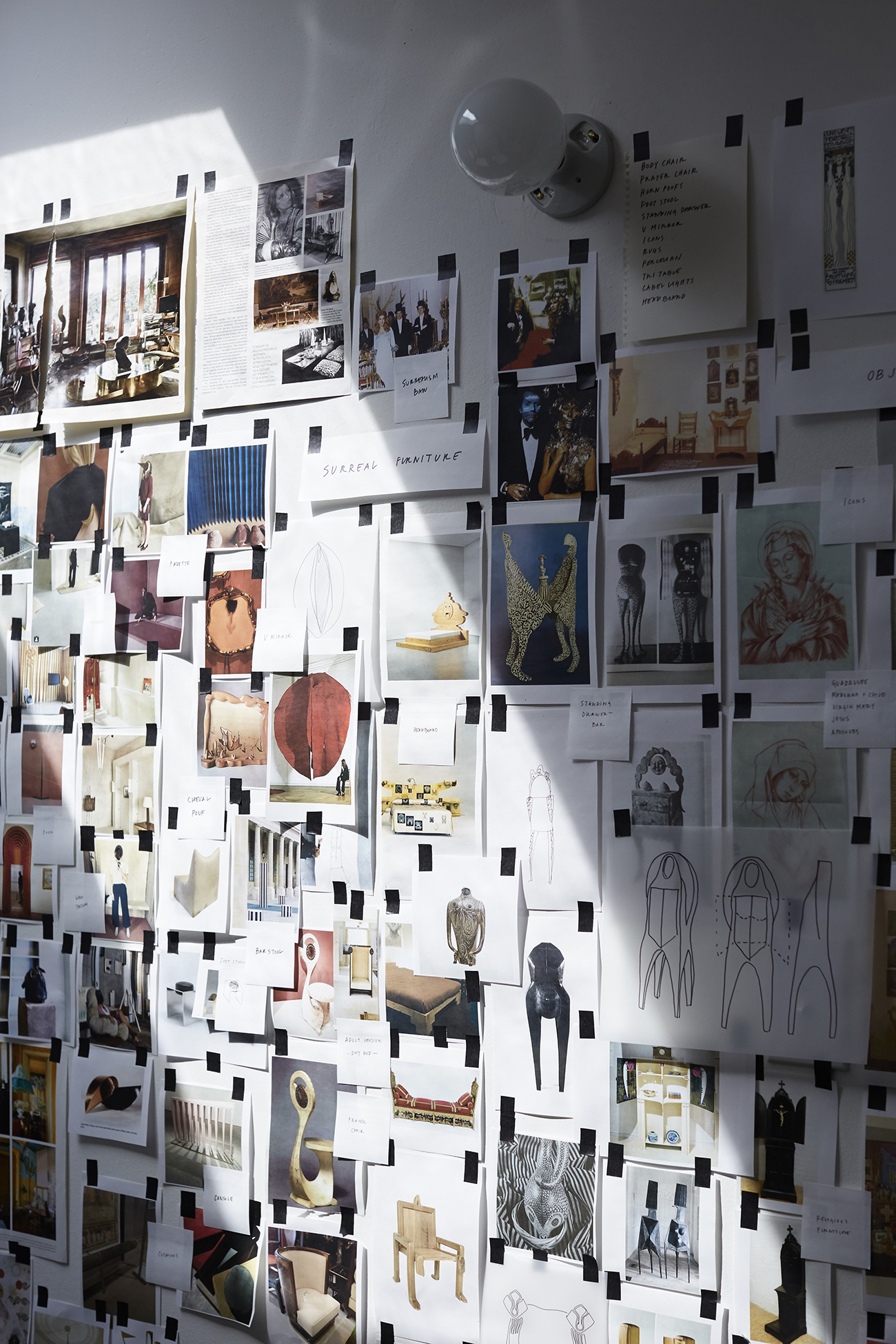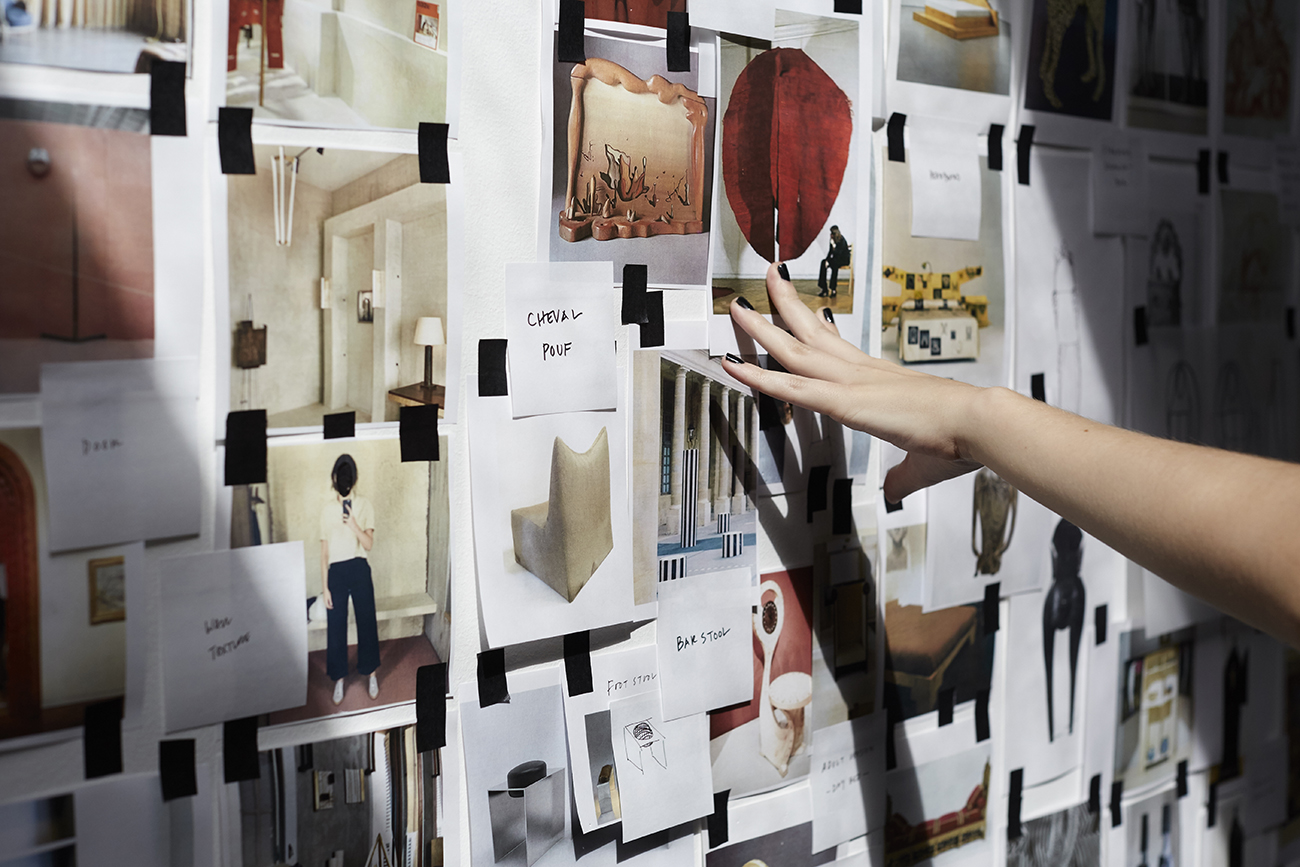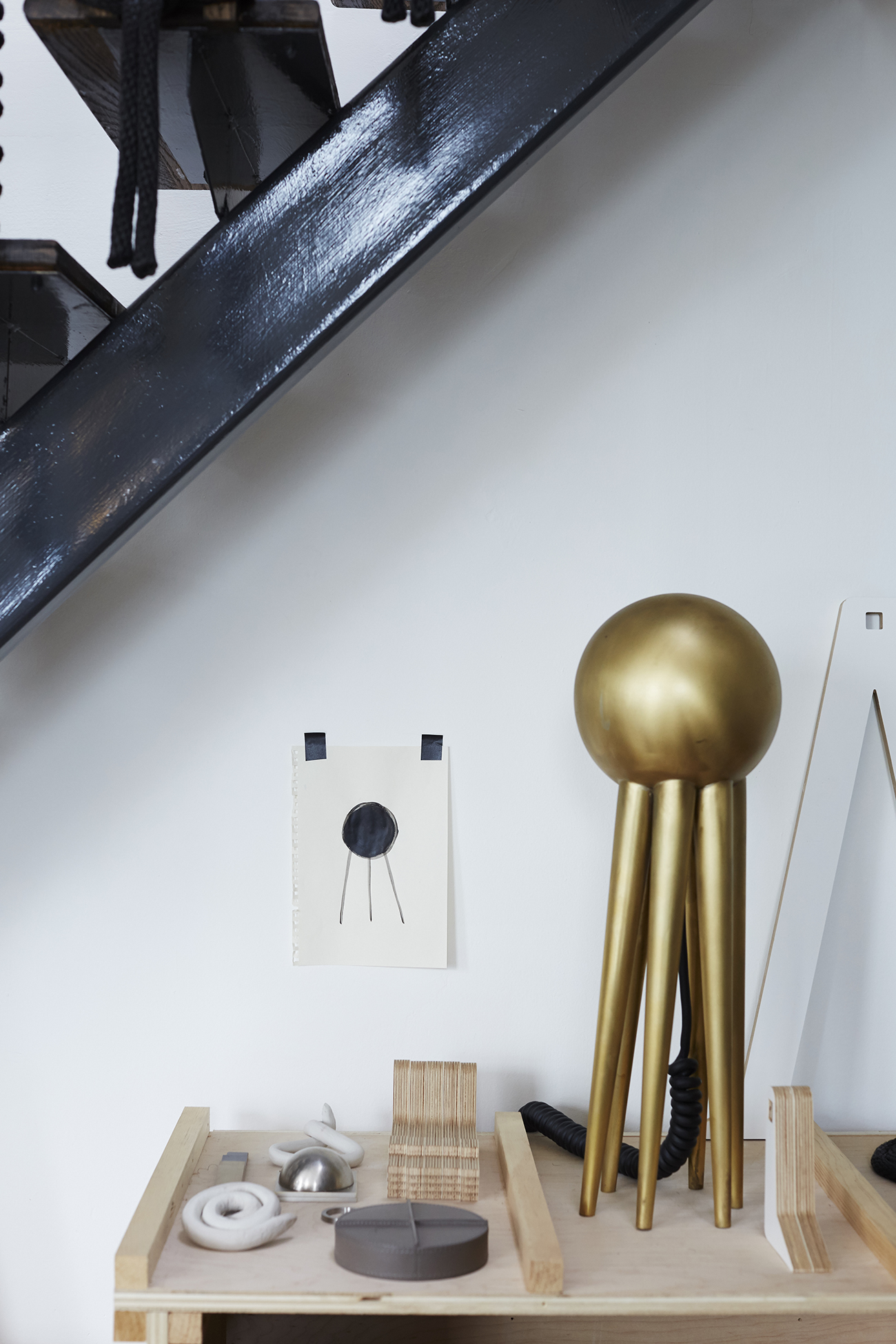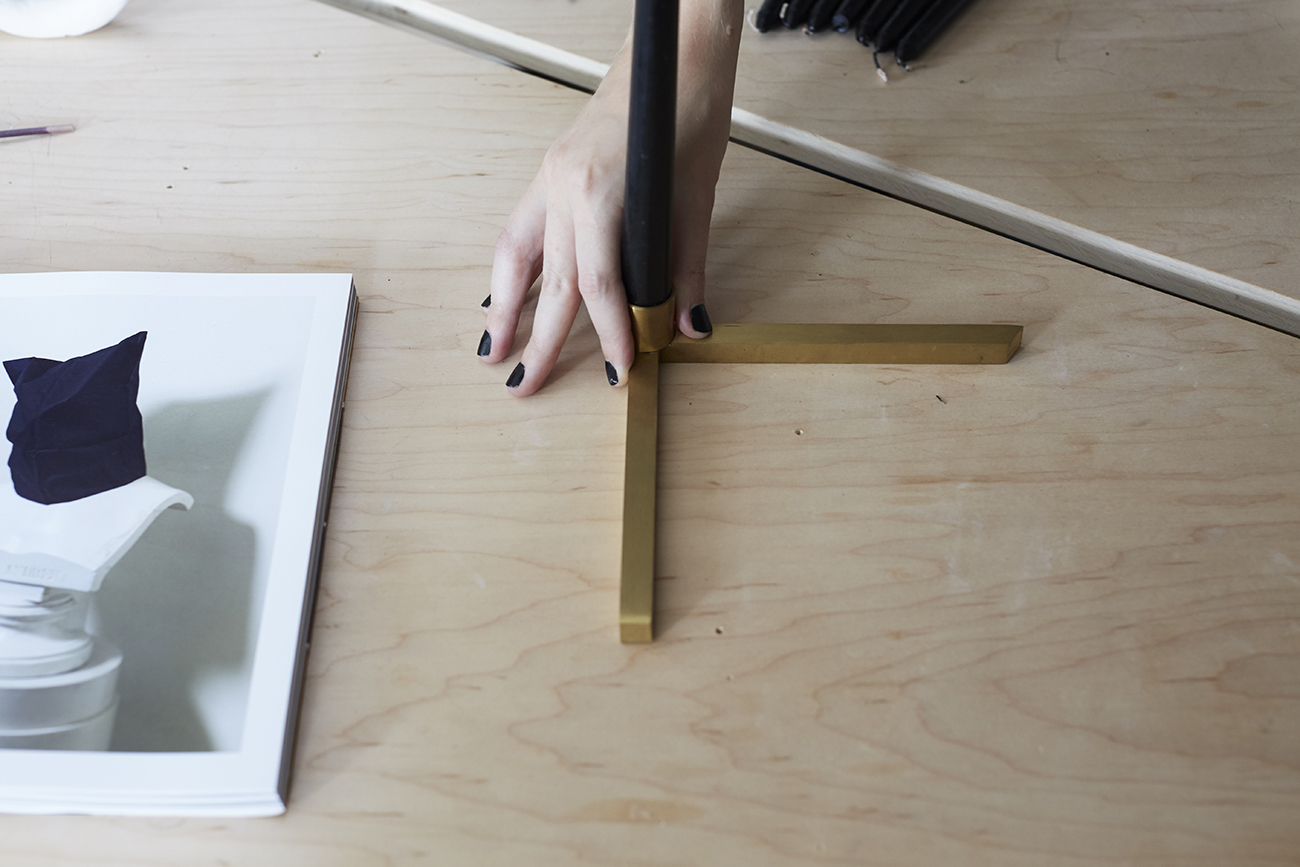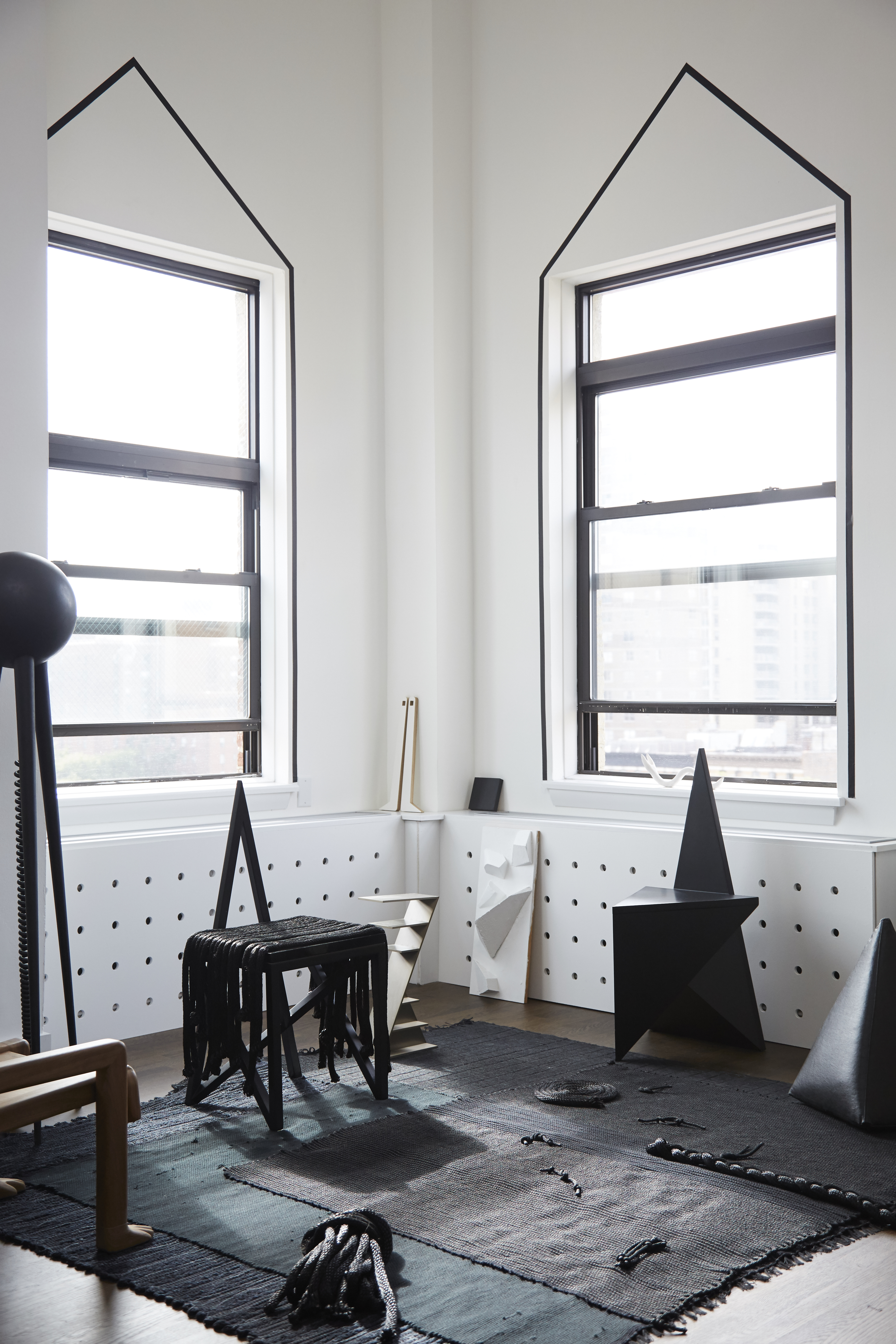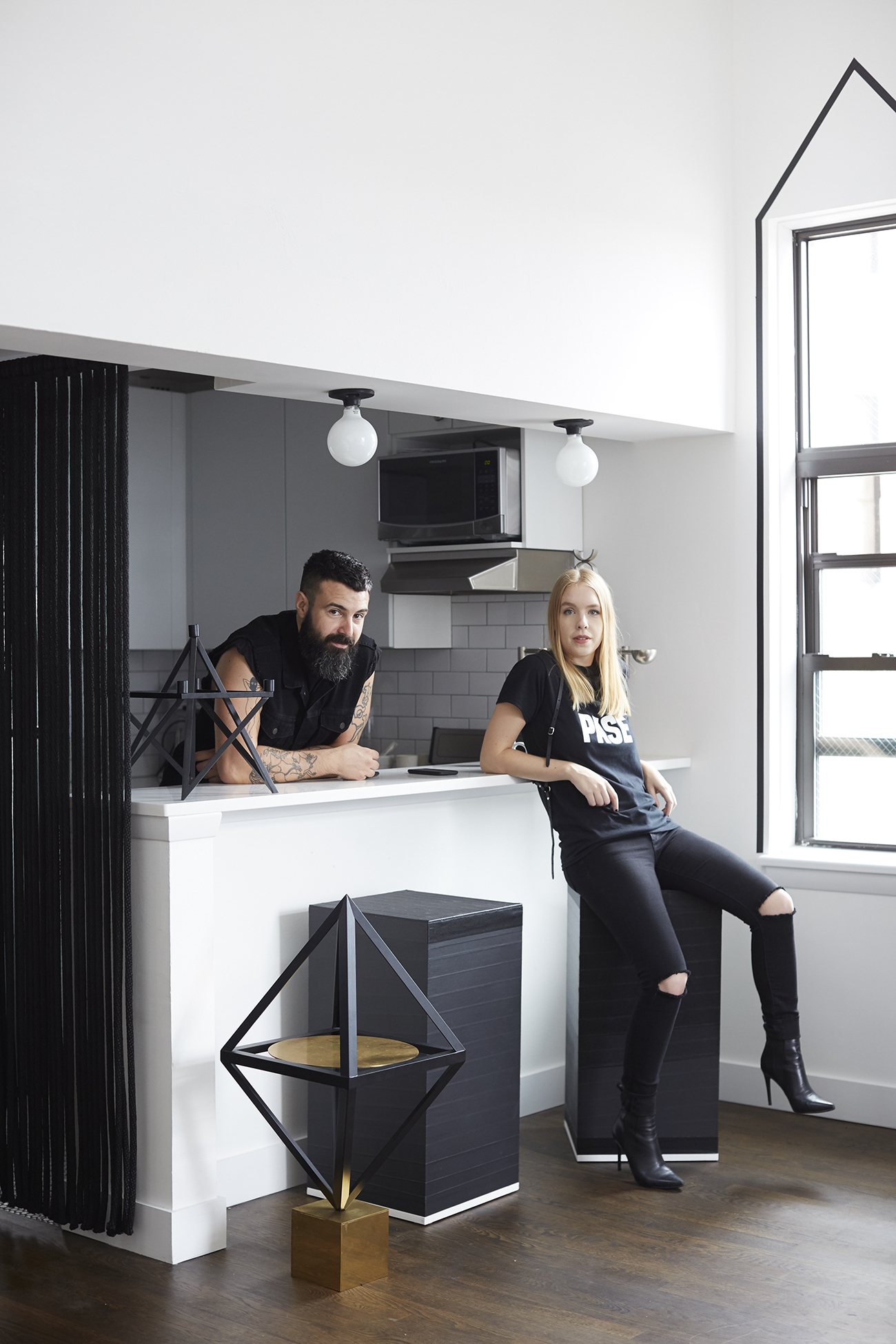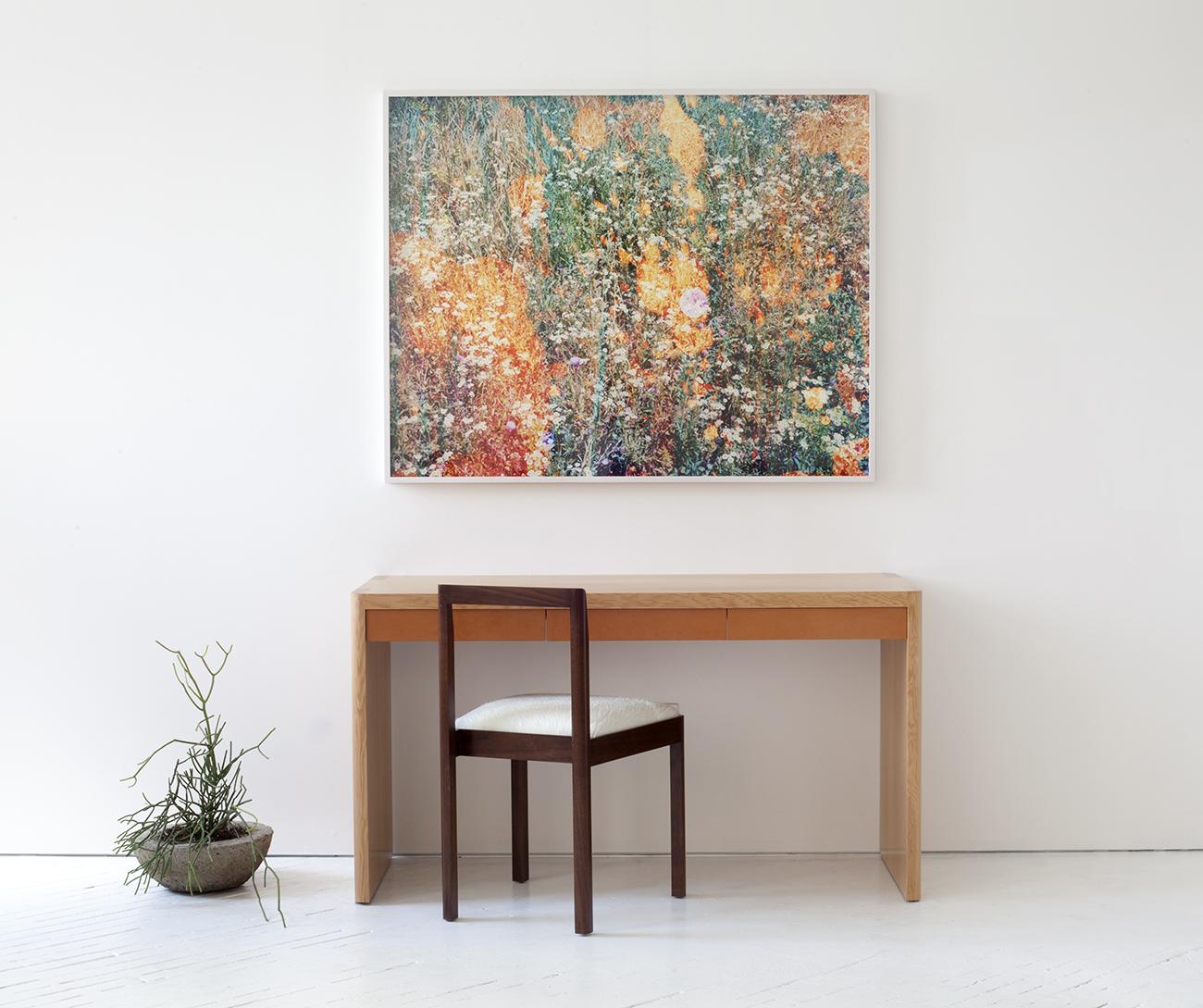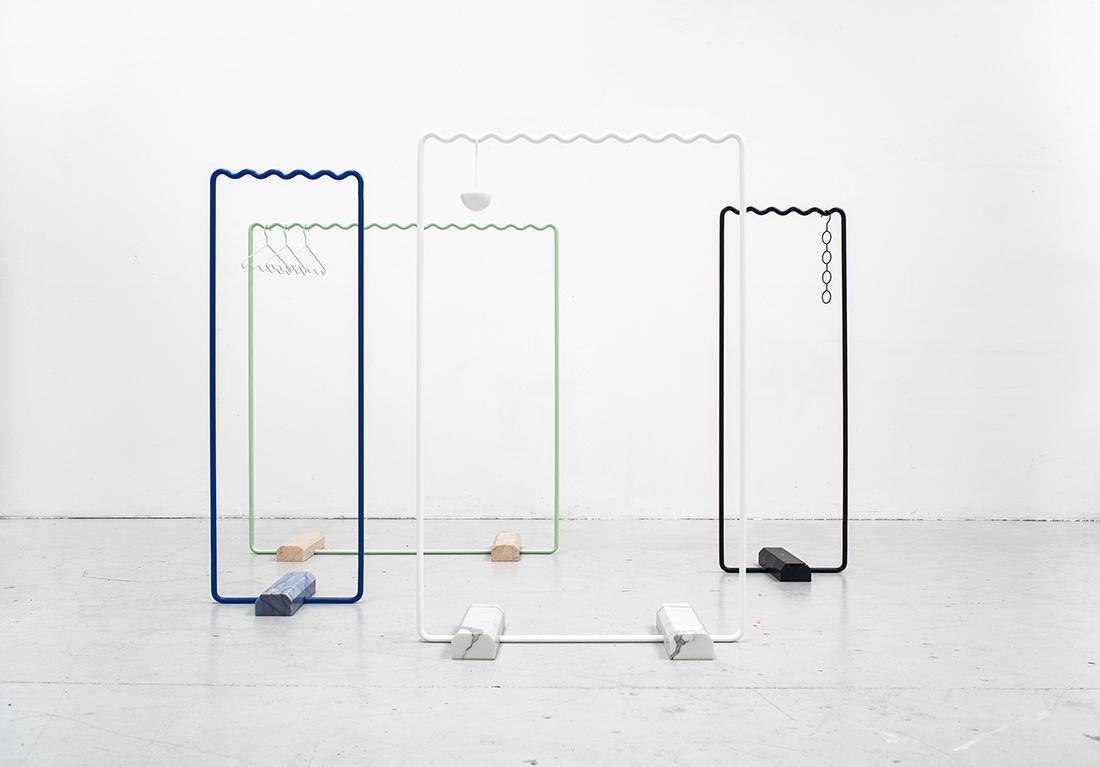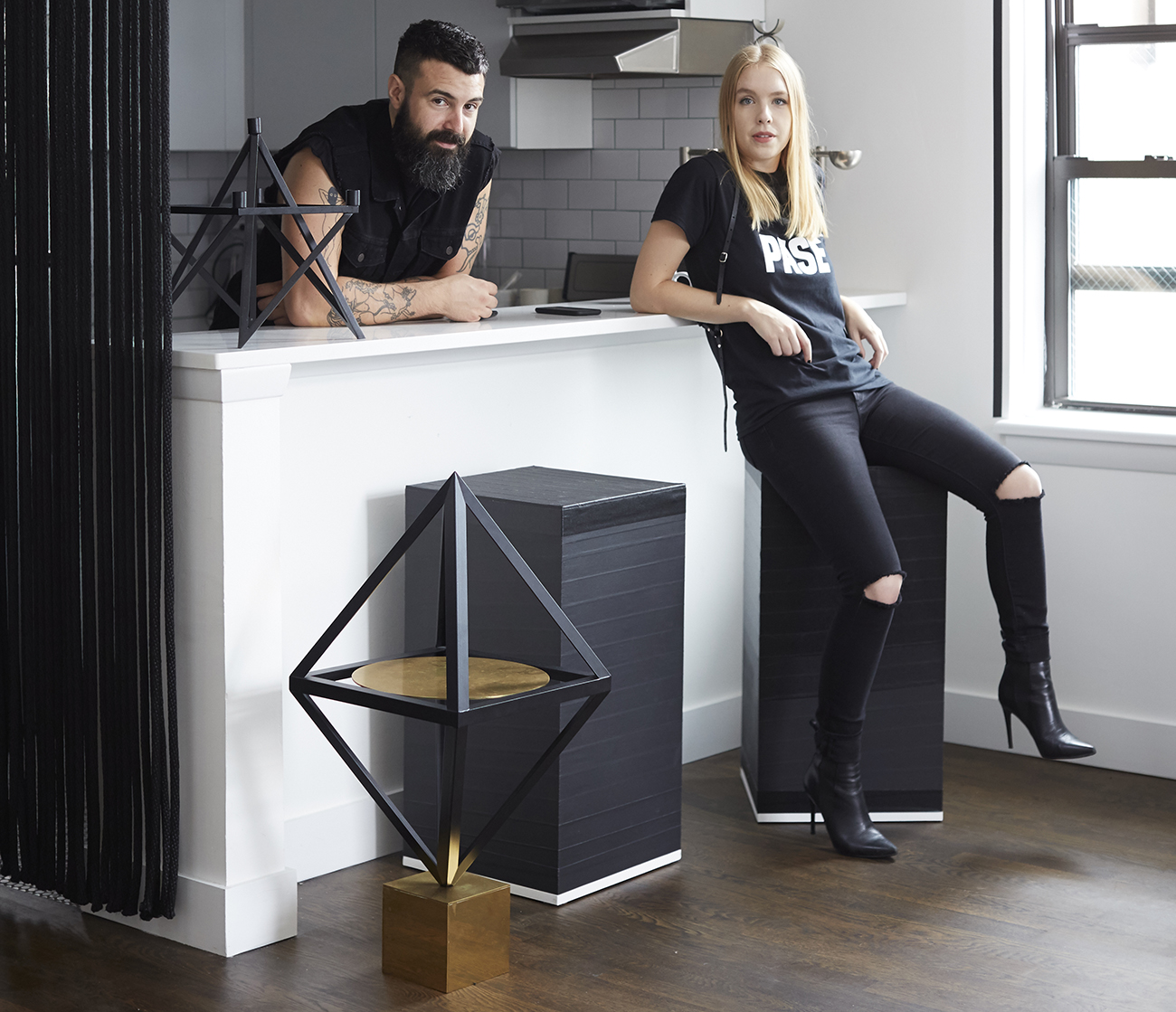
01.20.16
Studio Visit
Exploring Furniture’s Dark Side with Material Lust
PHOTOS BY EMILY JOHNSTON
Recess has begun.
It’s 10 o’clock on a fall morning, and Lauren Larson and Christian Swafford’s Gramercy studio has filled with the sound of children. The building is bordered by school playgrounds, the pair explain, as a steady racket permeates the walls. It’s a surprising sonic backdrop to a space like this one, bathed in black and white and punctuated by solemn, spider-like shapes.
Larson and Swafford have lived in the apartment, which occupies the penthouse floor of an eight-story building, for a year. The space is also home to Material Lust, the couple’s line of furniture and home goods named for a song performed by Swafford’s high school band. Just a year and a half old, the brand was born of the duo’s desire to fill glaring gaps in the world of home design: lighting that isn’t overpowered by its surroundings, for example, or a rug that does double duty as sculpture. (In addition to furniture, Material Lust counts interior design among its services.)
Now four collections in, their work is singular, striking, always made with extreme care and attention. It’s also often and unreasonably stereotyped. “We posted a photo on Instagram recently of a pentagram and a few of our chairs, and someone commented, ‘Unfollow these satanists,’” Swafford says. “Our design was based off of DaVinci’s Vitruvian Man. It was historical, but it had nothing to do with devil worship. Everyone feels the need to categorize.”
To place Material Lust neatly in any sort of category seems an inoperative challenge. It’s dark, but not diabolic. Serious, but not straight-laced. Grave, but not grim. It’s not, as it were, one thing or another.
It’s something else.
You two were students at Parsons at the same time. Did you meet at school?
Swafford: We knew of each other while we were there, but we never actually talked until we graduated. I had a gallery show in Brooklyn one night and I invited Lauren. She didn’t show up.
Larson: I didn’t want to go alone—and I had to play it cool a little bit. He wrote me later and asked, ‘Why didn’t you come?’ I wrote back, ‘I was waiting for my private gallery tour.’ That was 2009.
Did you study the same thing?
Swafford: I studied product design and Lauren studied interior design. It was pretty perfect—when we decided to start our business, we had the bases covered.
What happened once you graduated? Did Material Lust come together right away?
Christian: Not at all. For a while, we lived together and had our separate jobs. I was Creative Director at a furniture company and Lauren was a Design Director. In so many ways, it was the dream job. I’d climbed this mountain that I thought I was supposed to climb but when I got to the top, I thought, now what?
Lauren: I think it’s extremely important to work underneath someone when you’re just out of school, to learn and absorb varying tastes, and to make mistakes. Everyone wants to graduate and jump right in, but then you have no depth or material to reference. In 2014, we started releasing furniture as Material Lust, as a creative outlet while we worked more service-driven jobs. Then, in 2015, we finished our lighting line and our kids line for Kinder Modern. So we’ve really only been at it for a year and a half now.
What was the first piece you made together?
Swafford: The first pieces we made were the HIM and HER coat racks. Since it was our first project, we were really thinking about how to define our process and our brand, and deciding how we wanted to come out to the world. There was a lot of pressure. We fought a lot. We fight constantly, actually.
How do you work through those disagreements?
Larson: We just kind of battle it out. And more often than not, the finished product is a blend of our two ideas. I think that struggle makes the piece better in the end. We’re not just trying to make stuff. We really care about a sense of timelessness. We’ll draw a piece hundreds of times before it becomes what it is. We would never want to produce something that we only kind of like—we want to really love it. Which, again, is a lot of pressure.
As far as working together, we each have our strengths. I’m very conceptual, and Christian is more of an engineer. Without him, none of this would happen—he knows how to actually make things. I’ll come to him with an idea, and he’ll tell me if it works or not. He reins me in.
Have the two of you always been on the same—or similar—page aesthetically?
Swafford: Have you heard the term ‘pandrogyny’? A famous artist , Genesis P-Orridge, came up with that term. He and his wife did a project where they each got plastic surgery to look like the other, and when she passed away, he basically became her. The way Lauren and I work, I think we’re a little like a design pandrogyny. We still have our very specific perspectives, but when it all comes together, we generally agree.
How would you define your differences in perspective?
Larson: The coat racks are a perfect example of our two perspectives. His work is more heavy-handed. More angled. More aggressive. And it’s always black. Mine is curvier, rounder. I still have a hardness, but I execute in a softer way.
What’s most important to you in the design of an object or piece of furniture?
Swafford: Everything that we make is functional, but we’re approaching the design from an artist’s standpoint. We focus on high-end — which often means higher price, too — but it also means that everything is really well-made. It’s heirloom-quality.
Larson: Our biggest goal is that these are pieces you’ll pass down to your children, that you’ll never throw away. Quantity isn’t important. If only one lamp sells, at least I know it’s a high-quality piece, it’s sculptural, and it’s going to be in someone’s house forever.
Has your interior design experience helped you as you’ve pursued product and furniture design?
Swafford: Everyone we collaborate with we met while working in interior design: the metal workers, the fabricators. Some are in New York, others are in LA, and all of our lighting is made in Florence. Some of the places we work with there have been around for 100 or 200 years.
Larson: Relationships are really important to us. We fly out there to meet with them about twice a year. And since some of these shops are so old, we end up meeting the grandfather, the father, the son. Each generation learns from the last—and now, we learn from them and they learn from us. They like working with us, I think, because our designs are so different from what they normally do.
Do you have a favorite material to work with?
Swafford: It depends on the theme of the collection. With our first collection, Geometry Is God, we worked with a lot of metal. Now, we want to move on. We’re using wood, porcelain, textiles. We’re looking at more surrealist art. We’re doing more hand-carving, hand-illustrating. We’re going softer, a little more cerebral. It’s not our thing to experiment with new materials—we like using traditional materials in new ways.
Your children’s collection subscribes to the softer aesthetic you’re describing. What was the inspiration?
Larson: It’s called Fictional Furniture. It’s about storytelling. We wanted to create pieces that serve as blank canvases for a child’s imagination. The Ibis Chair, for example—you can fly on it, you can sit on it like a throne. There’s room to be playful.
Swafford: We also wanted to give kids more credit. We didn’t shy away from using high-end materials. This is a well-made piece that they’ll probably treat with more respect than something they can pick up with one hand and throw across the room.
Tell us more about the rugs those pieces are sitting on.
Lauren: We’re collaborating with Brooklyn textile artists To Dødsfall on a new textile collection that will be out in the spring. That’s in connection with our new gallery space. It’s going to rethink the entire concept of a rug—it can be a neutral ‘grounding’ piece, but it can still be sculptural, used for floor, wall and upholstery application. The collection is called DERMA and it’s driven by a fascination with skin intersections, growths of the body, tumors. Highly conceptual, again.
Swafford: The idea for it really came out of necessity. When we work in interior design, we’re constantly looking at what’s out there to source for our clients. We kept seeing the same rugs over and over again. Just completely stale stuff. With our first collection, it was the same thing—we were very much looking to fill holes. We needed a chair, a table, a vanity. We developed our sconce because there were none on the market that we liked. If they disappear on a wall, what’s the point?
Let’s rewind a little bit. Both of you grew up with artist mothers. How much do they influence your work?
Swafford: My mom’s from Mexico, and she’s a fine artist, a painter. She’s been incredibly influential to me. I show her everything—and she is very critical. Very. Her number one question to me is always, ‘Why?’ She’s a historian; she reads a lot. If my work isn’t coming from an honest place, she’s going to call me on it right away.
Larson: My mom is a technical painter. She’s a watercolorist. I started painting in her workshops from a very young age. It’s interesting: now that I’m an adult, I’m trying to push her away from technicality. I’m trying to steer her toward putting more feelings into her work. Every now and then, she’ll do some weird decapitation painting and I’ll tell her, ‘This is amazing. Expand on this ominous feeling.’
Lauren, you mentioned encouraging your mom to expand on new ideas. How do you two do that for yourselves? When one of you has an idea, what happens next?
Swafford: We have a process wall upstairs, which is where we create everything. Lauren spends a ton of time on it, and it really helps me when I’m sitting down to draw. I can see exactly what she was seeing. It keeps us on track. A lot of people these days like Pinterest, but we didn’t want to go digital with our board—I like to have it staring at me.
Larson: It’s the best way for us to get our ideas focused. More than a sketchbook, it’s a constant place to edit. Everyday I’m tearing images off the wall.
What are you working on now? Are there any upcoming projects you’re especially excited for?
Larson: Next year we’re hoping to open a teeny tiny gallery space in the Flatiron where we’ll install a complete Material Lust vignette: the rug, the chair, the light. We think it’ll help people get our vision—sometimes it’s hard when you’re seeing each piece alone by itself. We want it to be a long-term thing. Every three or four months, it’ll represent a completely different vision.
So much has happened in short time since Material Lust launched. Does it surprise you to think it’s only been a year and a half?
Larson: Yes. Sometimes we’ll compare ourselves to others and then we have to have a reality check—it hasn’t even been two years.
Swafford: We can be really hard on ourselves. Sometimes it feels like everything takes forever. But the more we do, the more we realize that we enjoy that organic experience of things taking time. We like that people find out about us naturally, by word of mouth or on their own. In a lot of ways, it’s nice that things didn’t happen overnight. It’s been a little like watching a child growing up.
